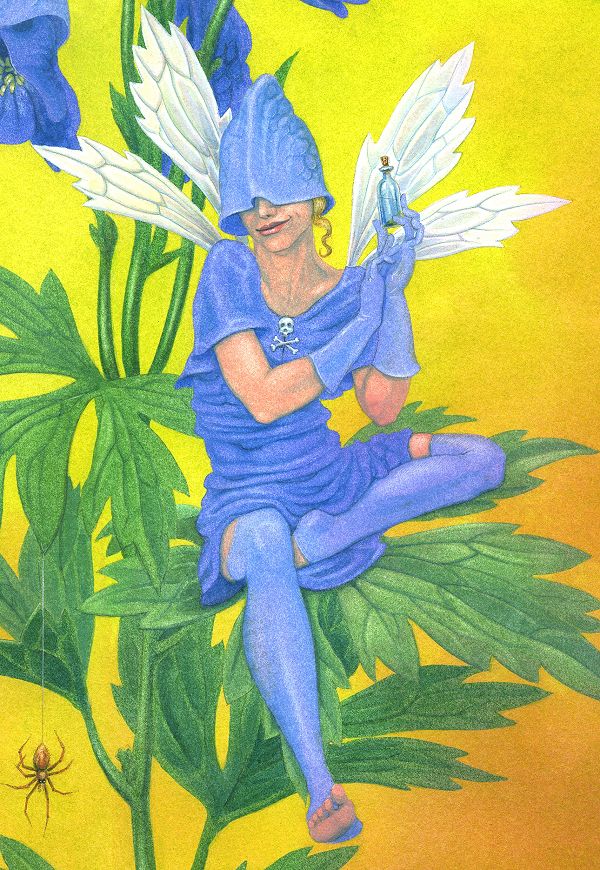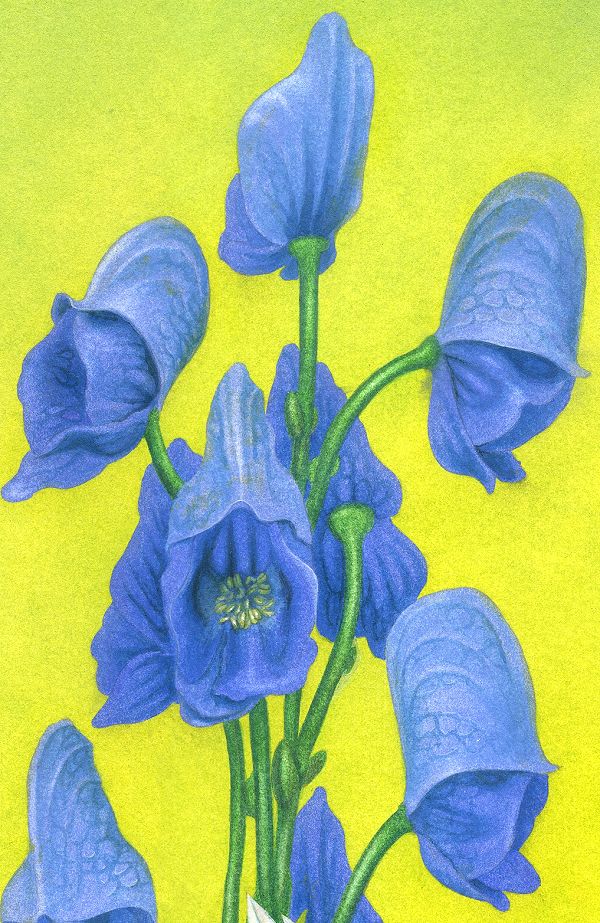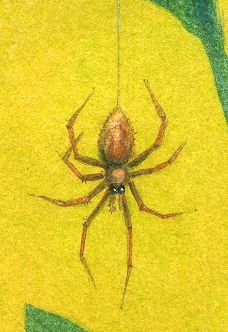Poison Flower Fairies: Aconitum Napellus, the Monkshood Fairy
Artwork details: Gouache and watercolour, 13.2 x 19.5 inches (34 x 50 cm), 2012.
This is the first of a series of 'Poison Flower Fairies', beginning, as seemed only appropriate, with one of the most poisonous plants around: Monkshood, or Aconitum Napellus. An extraordinarily pretty flower, and a gorgeous deep blue. In fact the example I based this painting on was a somewhat darker blue than this, but I felt that if I had painted it darker it would have thrown the balance of the picture out, and I am told that paler versions do exist.

I think the flowers have a very sinister look, but it is difficult to know whether this is because I know the plant to be poisonous. For instance, I have recently planted a Viper's Bugloss at the bottom of my garden, a native wildflower good for bees. It's just a rosette of leaves at the moment, but they also look sinister to me, and it may be that this is simply because I looked up that plant and found that to be poisonous too, and hard to get rid of because if its several foot deep roots... All the same, Monkshood has this about it: there are apparently very few accidental poisonings by Monkshood known because it tastes so horrible (not to mention a burning sensation of the tongue at the mere touch of it) that hardly anyone has ever accidentally eaten much of it. Or so I am told, I am not prepared to try it so I am taking this on trust.

Like many poisonous plants, of course, Monkshood has a history of medicinal use going back thousands of years. One thing I read is that it has been an important antidote to poisoning, which is ironic. Perhaps the little blue poison bottle in the fairy's hand is, after all, intended to be put to some helpful use, but I don't trust the look of that smile on her face.

Monkshood makes its appearance in Ancient Greek and Roman mythology: In Metamorphoses the Roman poet Ovid has a nice story about its creation. One of the Twelve labours of Hercules was to fetch Cerberus, the terrifying three-headed hound of the Underworld, and bring him up to the surface of the earth, using only his bare hands. This he duly did, but Cerberus was downright cross about this treatment and, as he was dragged out of the underworld, fangs gnashing and heads tossing, flecks of monster-dog-spittle sprayed on the stony ground around about. And up sprang the plant Aconitum, or Monkshood. I wanted to get a part of this story into my painting, but I didn't see how I could, without making it another kind of picture altogether. However Ovid makes mention of it a second time in Metamorphoses as the poison that the goddess Athena sprinkled on poor mortal Arachne to turn her into a spider. So I did sneak a little spider into my painting. The story of Arachne is of course worth a painting or two in itself, and if you are interested, I did once paint a subject inspired by the story called Ms Arachne's Residence, where you can also read the story.

All images and prints are © Nancy Farmer. Please email me if you wish to reproduce any of these images, or see my permissions page in the 'info' section.
Prints & Original Artwork
You can now buy prints of my work (and a few originals) in my Etsy Shop. If you would prefer to buy direct from me, or you cannot find what you are looking for in the shop, feel free to email me instead: mail@nancyfarmer.net. If you are interested in original artwork, I do intend to post a list of currently available artworks in due course, but I'm in the process of moving and re-building a main website, so for the meantime please also email me for more information on originals, and also commissions.